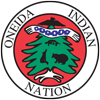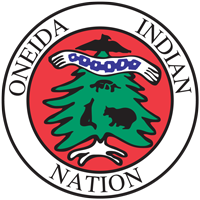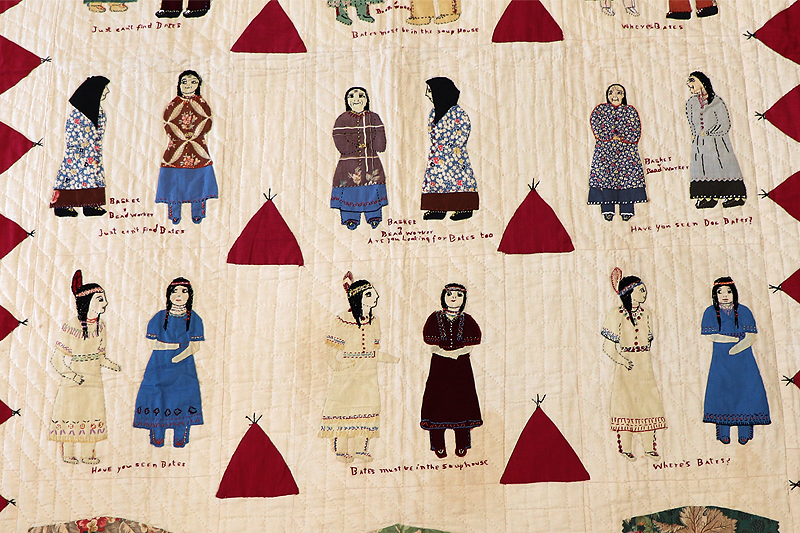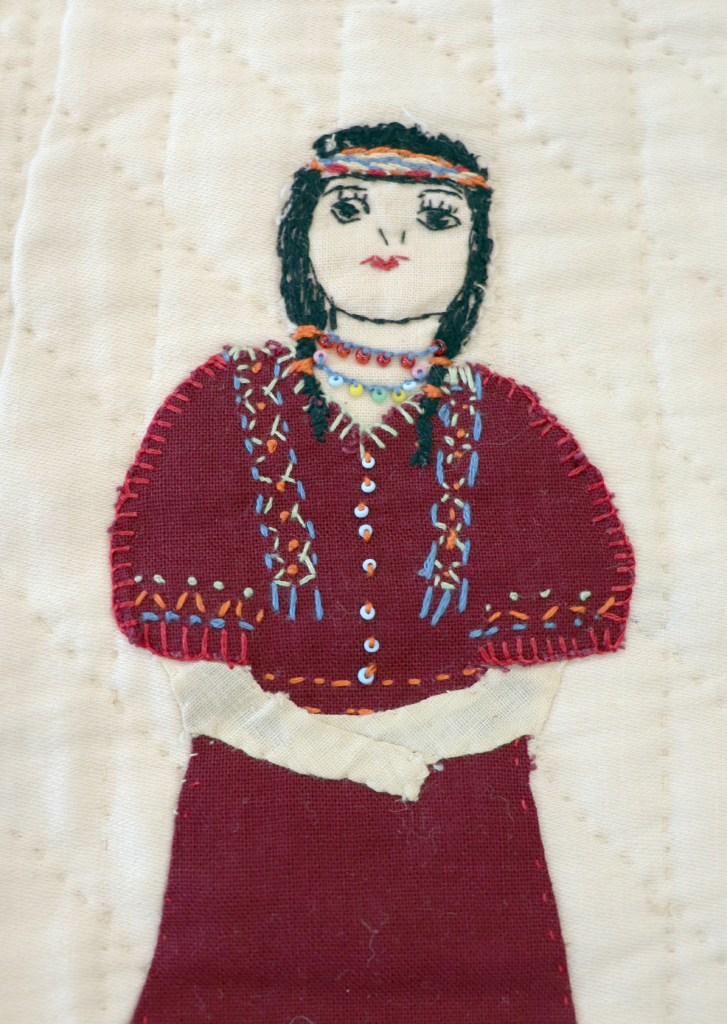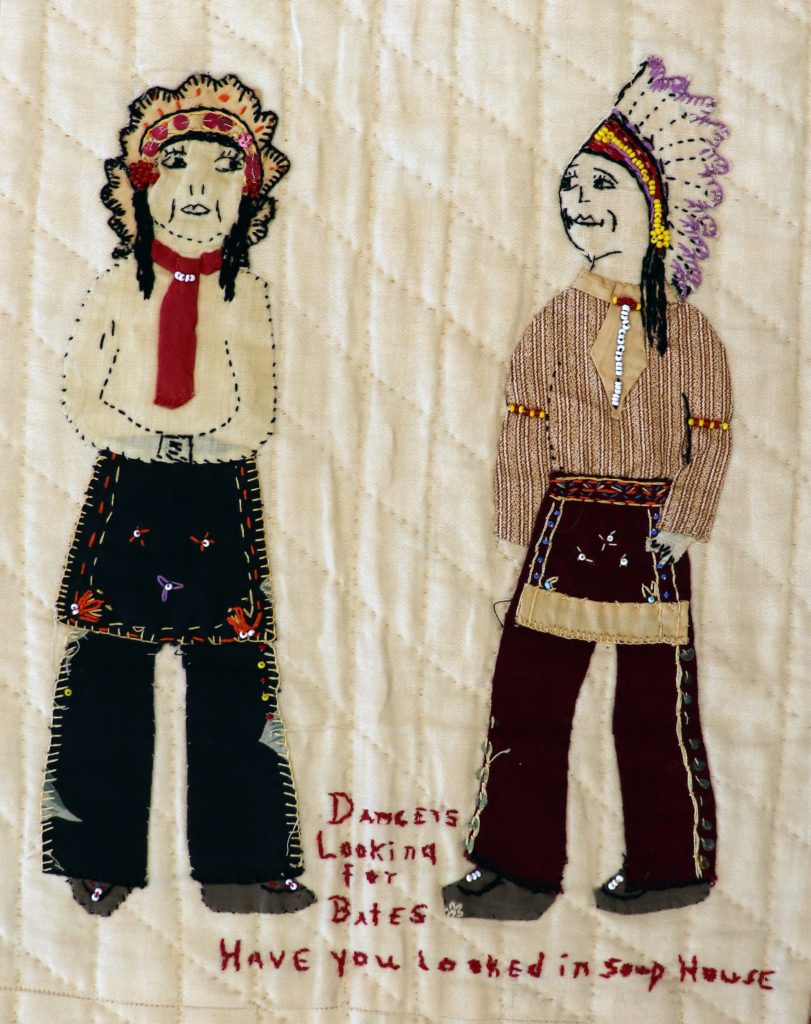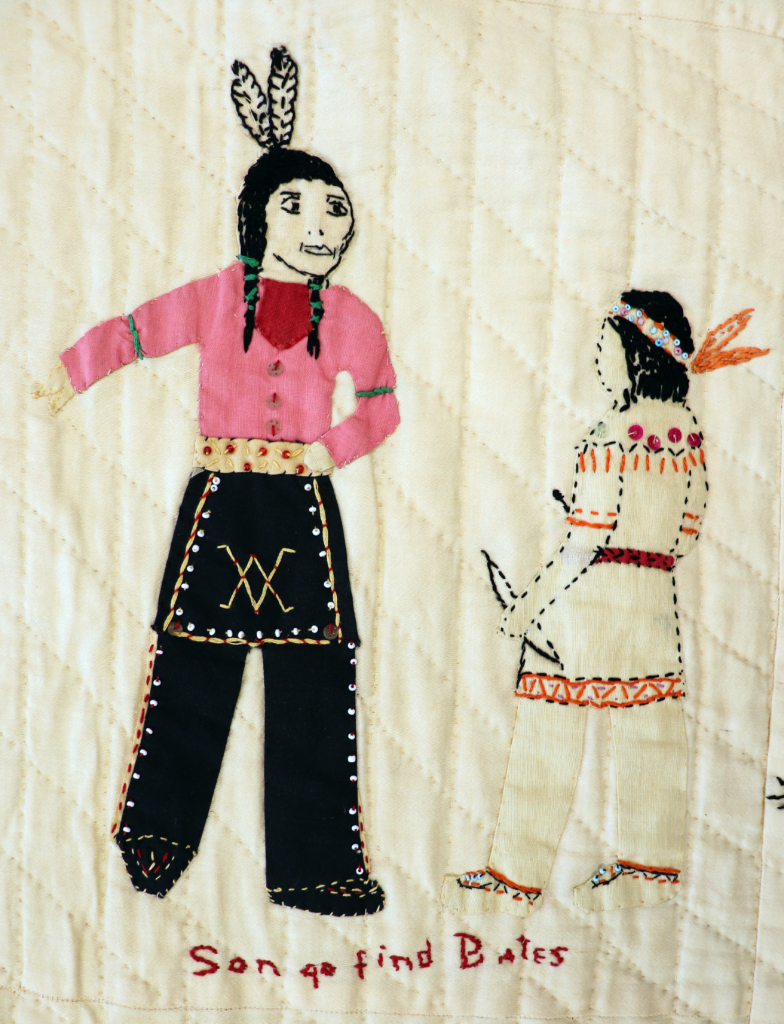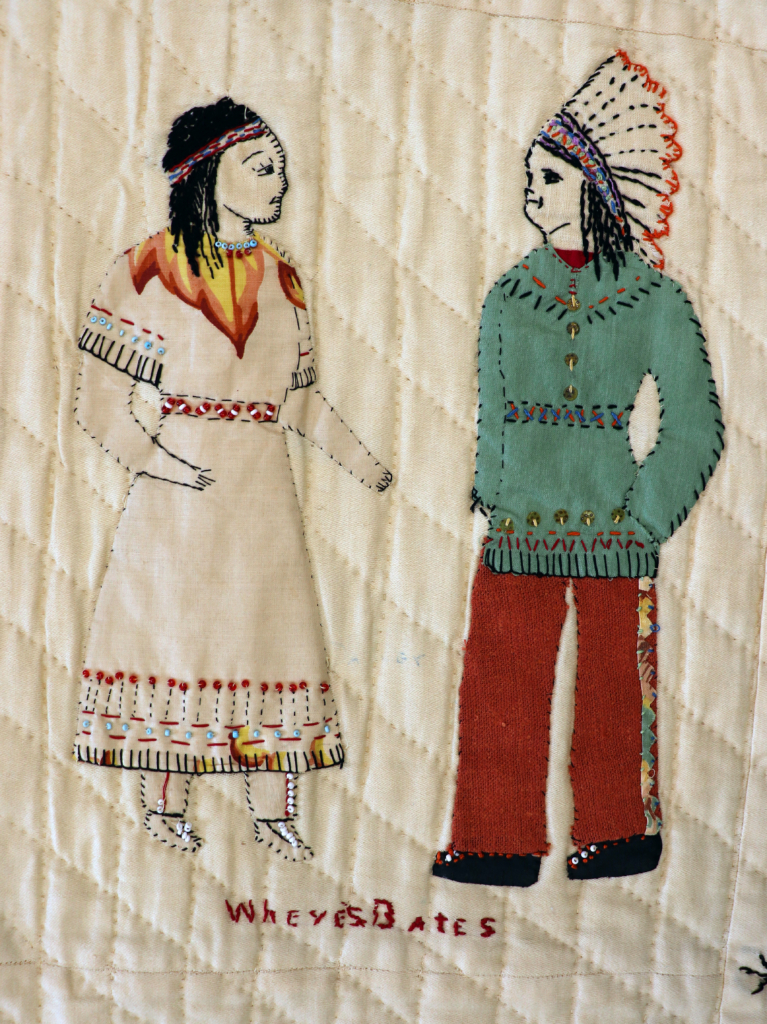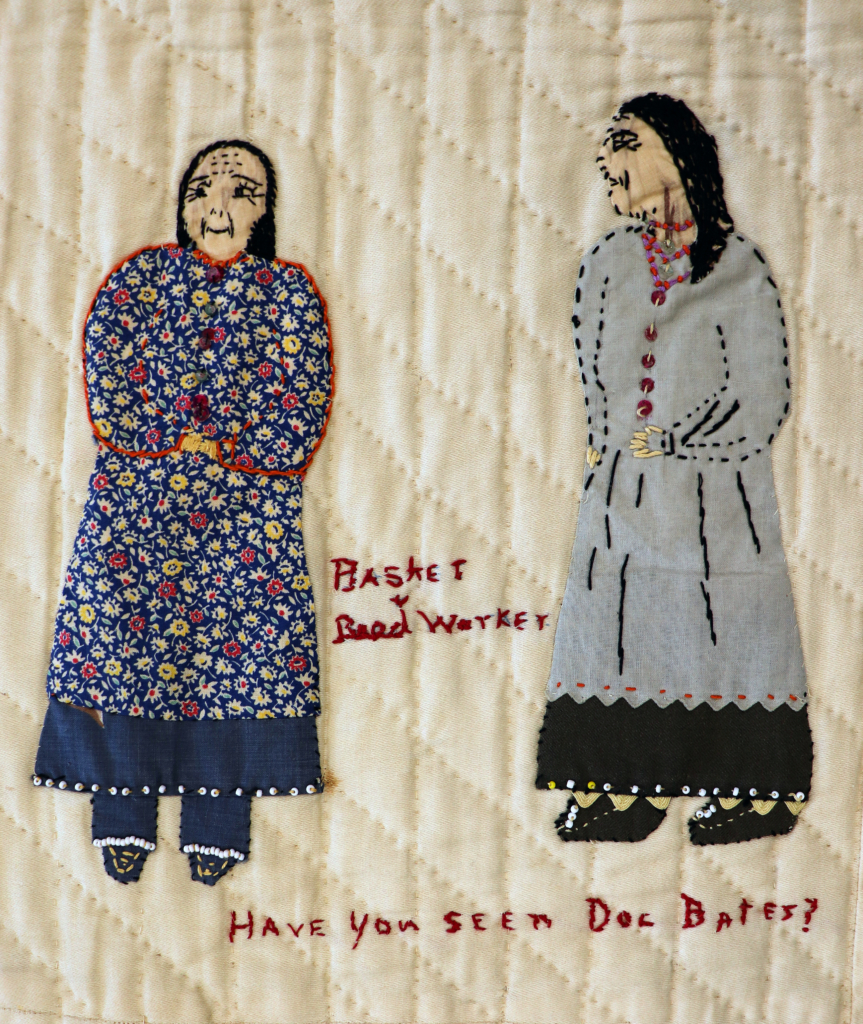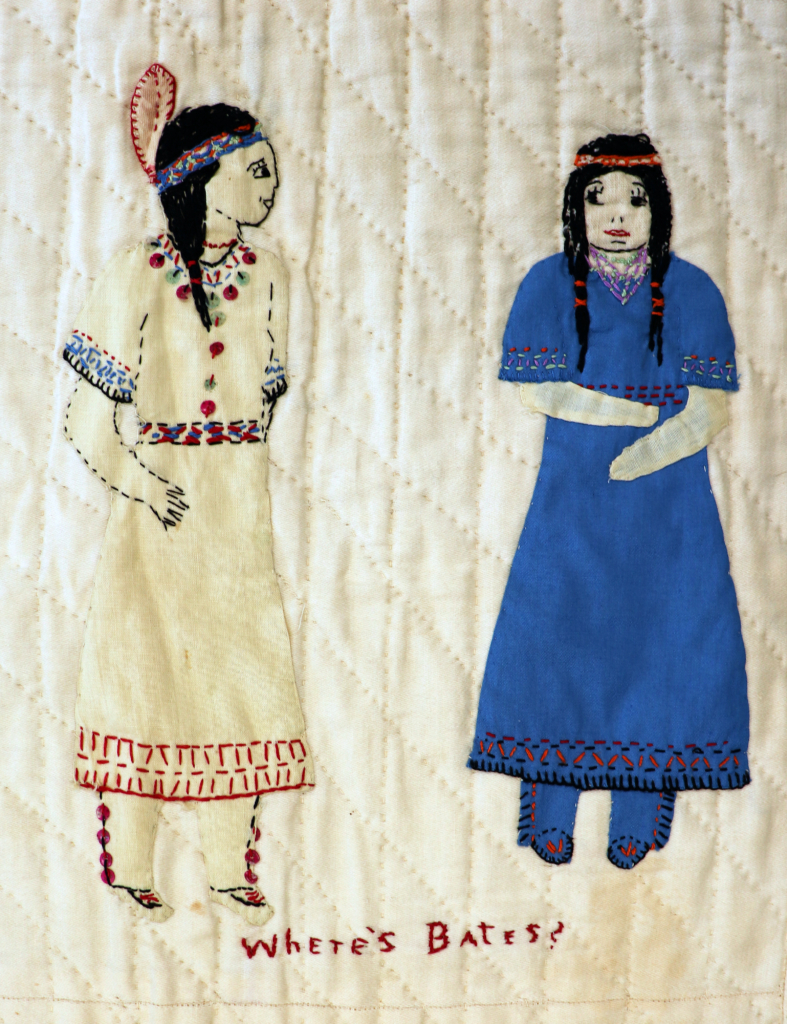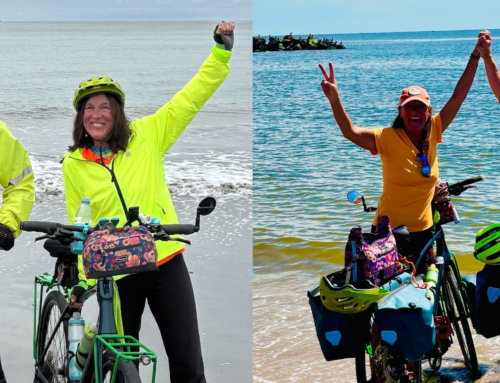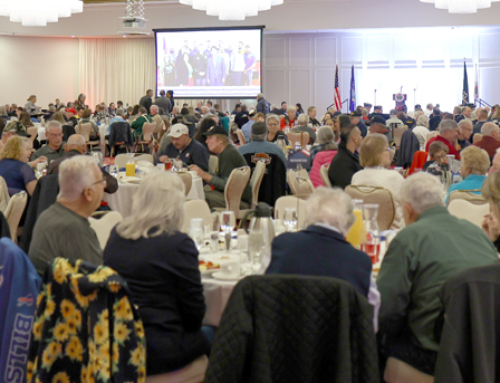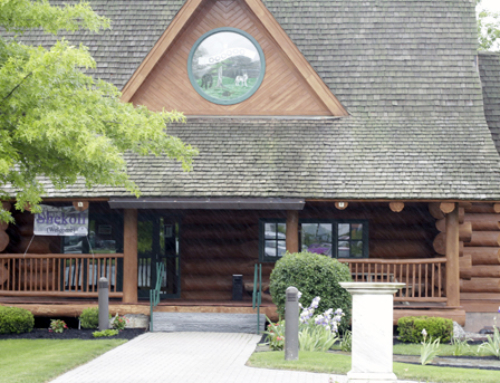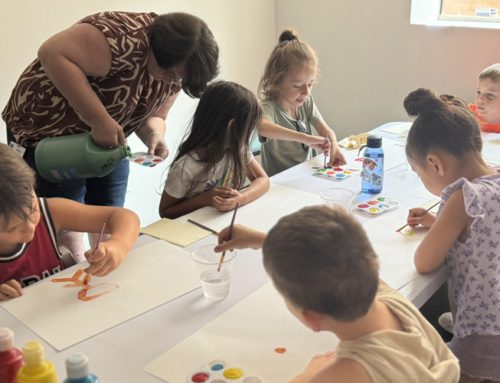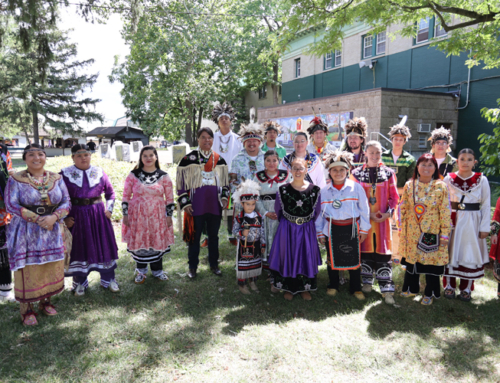During the 1939 New York State Fair, an Oneida woman named Emily Johnson (Turtle Clan) had been feeling unwell and spent much of her time resting on a cot near her craft booth in the Six Nations Agricultural Society Indian Village. While there, she frequently overheard others asking the where-a-bouts of Dr. Erl Bates, seeking his guidance on various issues. Dr. Bates had played a key role in shaping the Indian Village through his involvement with the Cornell University Indian Extension Program during the 1920s. To honor him, Emily embroidered a series of scenes onto a quilt, illustrating the various Haudenosaunee people represented throughout the Indian Village. She also stitched phrases such as “Where’s Bates,” “Can’t find Bates,” and “Have you seen Doc Bates” multiple times, recognizing his significant presence and influence within the Village.
Emily presented the quilt as a gift to Dr. Bates’s son during the 1940 New York State Fair, and it remained with the family for many years. In 2023, while researching the history of the Six Nations Agricultural Society Indian Village, Oneida Indian Nation Documentarian Kandice Watson (Wolf Clan) discovered a newspaper clip from the September 2, 1940 edition of the Syracuse Herald Journal with information about the quilt. Further research led to the discovery that Dr. Bates’s descendants, living in Ohio, still owned the quilt and were happy to donate it back to the Nation.
“I was surprised to read about this beautiful quilt, as I had never heard mention of it prior to my research,” said Kandice. “I wonder what other Oneida treasures are out there, waiting for us to rediscover them?”
The quilt was recently displayed during the 2025 State Fair.
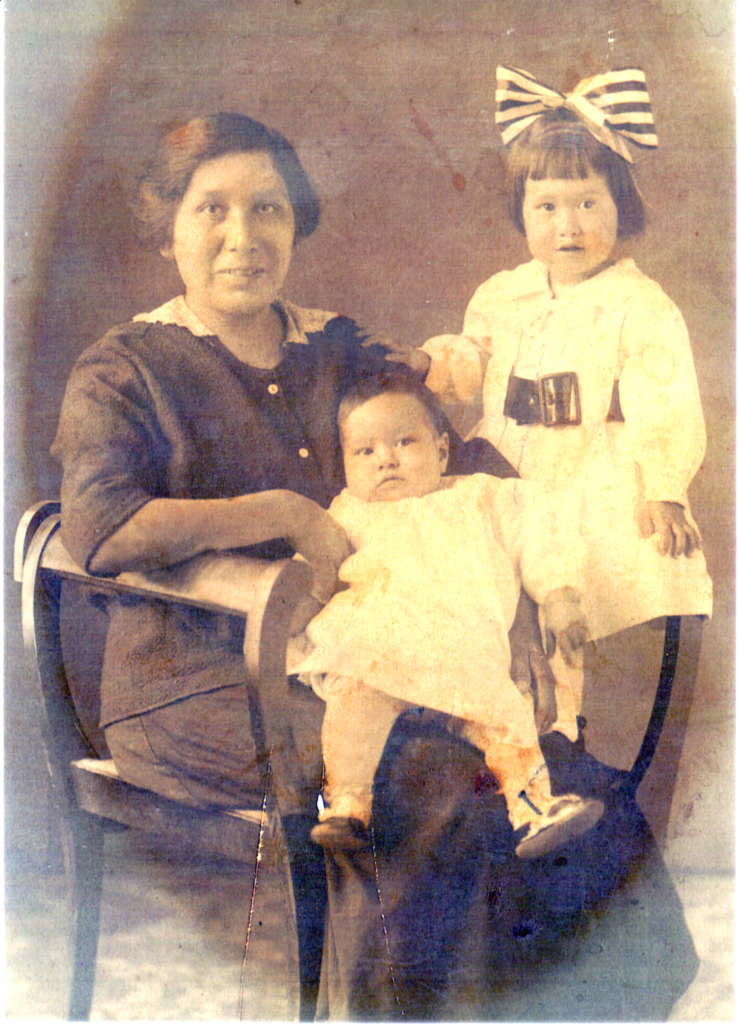
Emily Johnson with her daughters Eleanor (baby) and Beulah, circa 1916.
Who was Emily Johnson?
Emily Johnson is an important figure in Oneida Indian Nation history. She was born at the Oneida Orchard Community to Nancy George and Lewis Doxtater on July 5, 1888. She had six sisters and one brother, who died at a very young age.
Emily, a Member of the Turtle Clan, was often the receiver of the treaty cloth delivered to the Oneida Indian Nation by the federal government under the provisions of the 1794 Treaty of Canandaigua. She was known for making dresses from the cloth.
She also was instrumental in organizing community activities for the Oneida Indian Nation, including holiday celebrations and gatherings at the Marble Hill Church.
Emily was a member of the Six Nations Agricultural Society, and a fixture in the Indian Village at the New York State Fair for many years, occupying the Oneida craft booth with Mary Winder (Wolf Clan). Their descendants still share the booth to this day. Emily was known for her beadwork, no-face dolls, and corn husk dolls, and also served as the director of the Nation’s 4-H display for a time.
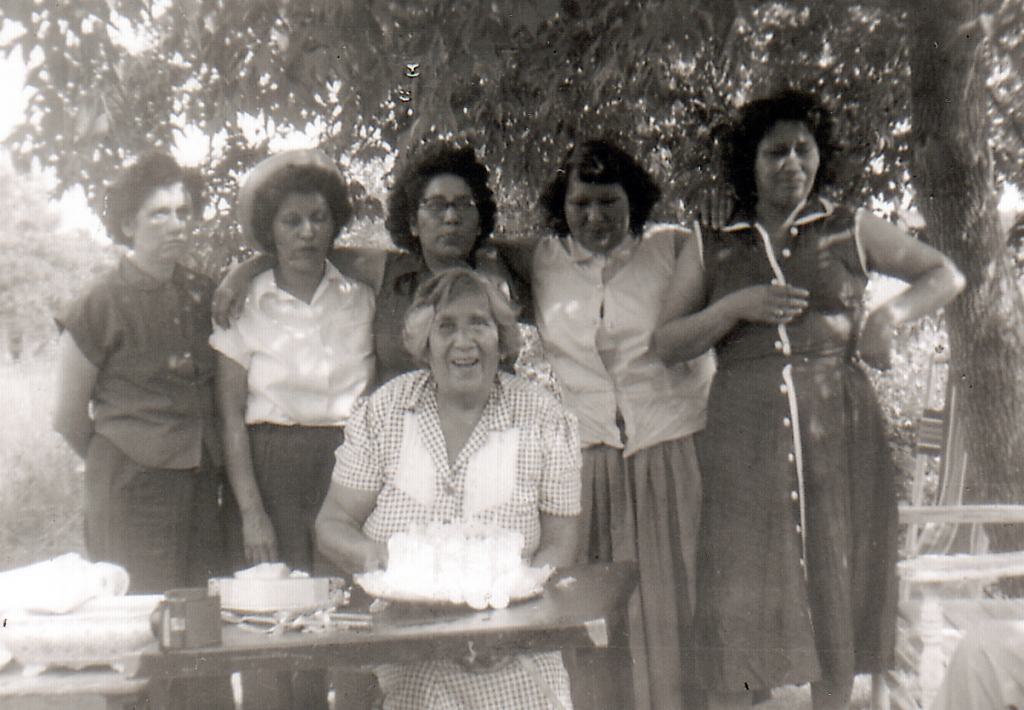
Emily Johnson with her daughters, (back row, left to right) Beulah Green, Eleanor Cree, Dorothy Johnson, Eunice Casey and Thelma Buss. Photo taken at Emily Johnson’s home in 1950.

Nelson and Emily Johnson with family (circa 1963). Nelson is holding Donna Kaulback, Emily is holding Debbie Freer. Sitting, left to right: Vicki Kaulback, Billy Kaulback, Susie Kaulback and Jimmy Freer (all Oneida Members).
Emily has many enrolled Oneida descendants today. Many of her descendants had strong ties to the Indian Village as well. Her granddaughter, Barbara Bigtree, was the first Oneida Princess in 1957, and Barbara’s daughter, Deborah Freer, followed in her mother’s footsteps being named the Oneida Princess in 1978. Emily’s daughter, Beulah Green, was a Turtle Clan Mother and served her Clan and Nation for many years until her passing at the age of 101 in 2014.
